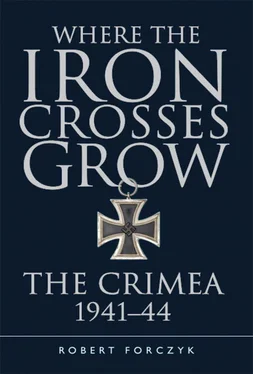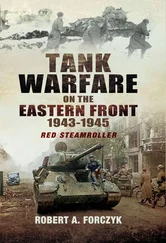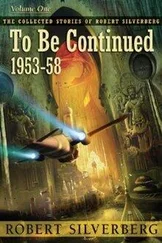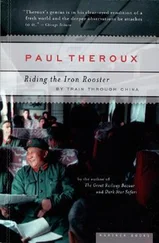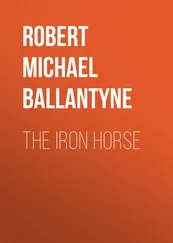____________
Generalleutnant Johannes Zuckertort, who was a so-called Mischling (halfbreed) of Jewish descent, had to receive a German blood certificate signed personally by Adolf Hitler in order to remain in the Wehrmacht. His younger brother Karl, also a general, had commanded Panzer-Regiment 5 prior to the war but had been expelled from the Wehrmacht in July 1941 (probably for anti-regime attitudes). Thus, Johannes had a strong incentive to toe the Nazi line if he wanted to remain in the Wehrmacht. Now he was responsible for planning the artillery support for Hansen’s assault on the Perekop position. Zuckertort directed that HArko 110 (Army-level Artillery Command) would control the light artillery, while HArko 20 would direct the heavy artillery. The artillery preparation commenced at 0500hrs on September 24, with the divisional artillery firing over 2,500 rounds at the Soviet positions. Fliegerkorps IV was able to provide only limited air support to Hansen, but bombers from KG 27 and KG 51 bombed Soviet defenses around Perekop. The Soviet VVS and VVS-ChF were still quite active over the Crimea and neither side had air superiority.
At Y-Hour (0730hrs), assault groups from the 46. and 73. Infanterie-Divisionen moved up to attack Danilin’s outer defensive line. Generalmajor Kurt Himer’s 46. Infanterie-Division was a Welle 1 (1st wave) formation, consisting primarily of pre-war regulars, but Generalleutnant Bruno Bieler’s 73. Infanterie-Division was a Welle 2 formation, made up primarily of reservists. Each division attacked with four or five battalions, supported by pioneers, 2cm flak guns, Panzerjägers and a battery of StuG III assault guns. Oberstleutnant Otto Hitzfeld, commander of Infanterie-Regiment 213 led the 73. Infanterie-Division’s main effort against the Chervonyi Chaban State Farm strongpoint, held by Captain E. K. Ivashin’s 2nd Battalion/361st Rifle Regiment. The Soviet troops were well dug in behind a thick obstacle belt and were supported by plentiful artillery. The engineers from Pionier-Bataillon 173 supporting Hitzfeld’s infantry went first, creating a breach in the Soviet obstacle belt under fire, but suffering heavy losses in the process. Finally, a breach was secured and, under cover of smoke grenades, two battalions from Hitzfeld’s regiment closed in on the Soviet strongpoint. Intense close combat ensued, and flamethrowers and concentrated charges were used to eliminate Soviet bunkers. Ivashin’s battalion was gradually destroyed piece by piece, and the farm strongpoint was overrun after Ju-88s from KG 51 bombed it. [5] Ia, Anlagen z. KTB 7, Band 3, Gefechtsbericht über den Einsatz des I.R. 213 beim Durchbruch durch die Lendenge von Perekop, 27 September 1941, 73. Infanterie-Division, NAM (National Archives Microfilm), series T-315, Roll 1064.
However, Hitzfeld had lost four company commanders, and overall the 73. Infanterie-Division suffered 770 casualties on the first day of the offensive. In the eastern sector the 46. Infanterie-Division had a slightly easier time, but still suffered 329 casualties and made only modest progress. At the cost of over 1,100 casualties, Hansen had defeated Kuznetsov’s covering forces but had not yet reached the main line of resistance.
Manstein ordered the 22. Infanterie-Division and part of LSSAH to launch diversionary actions at Chongar and along the Sivash, but these failed to impress Kuznetsov. By the end of September 24, Kuznetsov knew that the Germans were making their main effort at Perekop, and he ordered the unengaged 106th Rifle Division to send its 442nd Rifle Regiment to replace Danilin’s losses.
At dawn on September 25, Hansen resumed his assault and continued to mop up Danilin’s forward security positions. The German Stossgruppen (assault groups) were mixed formations, built around an infantry battalion and supported by a pioneer platoon, a section of assault guns, and a platoon of 2cm flak guns. Soviet artillery fire was intense, and inflicted most of the German casualties in the flat terrain, although Soviet machine guns firing from earthen bunkers were difficult to suppress. As the German Stossgruppen approached the main line of resistance at the Tatar Wall, Danilin decided to mount a spoiling attack with his reserve: Infanterie-Regiment 530 and Major Semyon P. Baranov’s 5th Tank Regiment. However, Baranov sent in only his T-37 and T-40 light tanks, keeping his ten T-34s back, so the counterattack was repulsed by German Panzerjäger fire, which knocked out eight light tanks. German losses on the second day of the attack were only 322, but Danilin had lost about one-third of his infantry.
Hansen made his main assault against the Tatar Wall on the morning of September 26, beginning with a terrific artillery preparation that used up much of his remaining artillery ammunition, and dive-bombing attacks by Ju-87 Stukas from StG 77. Fighters from III./JG 77 also appeared in force over the Perekop Isthmus and claimed 27 kills on this day. [6] Christer Bergström and Andrey Mikhailov, Black Cross/Red Star, Volume 2 (Pacifica, CA: Pacifica Military History, 2001), p. 212.
Both of Hansen’s divisions were exhausted after two days of heavy close-quarter fighting, but so was Danilin’s 156th Rifle Division. The main strength of the Soviet line was built around the 3rd Battalion, 361st Rifle Regiment. Manstein provided SS pioneers and an artillery battalion from the LSSAH to reinforce the attack. Hitzfeld’s IR 213 committed the III./IR 213 and II./IR 170, plus some SS pioneers, to breach the Tatar Wall. Under cover of smoke and support weapons, assault squads reached the ditch around 0900hrs and used wooden boards to ascend the steep wall of the ditch and reach the top, which was covered with barbed wire and trenches. Inside their trenches, invisible from below, Soviet infantrymen hurled grenades into the ditch, inflicting heavy losses on the German pioneers. Soviet return fire was intense, but Gefreiter Willibald Unfried, a machine gunner in 9./IR 213, placed suppressive fire on the parapet, which kept the Soviet soldier’s heads down at the crucial moment. German combined-arms tactics, aggressive small-unit leadership, and the presence of skilled soldiers such as Unfried paid off, as assault squads managed to fight their way to the top. The 361st Rifle Regiment fought very well, but by 1030hrs their defense was collapsing. Then, west of Fort Perekop, it suddenly broke. Stossgruppen from both divisions surged forward, overrunning mortar and antitank positions. Incredibly, Hitzfeld’s troops fought their way into the town of Armyansk, south of the Tatar Wall, and engaged in tense house-to-house fighting against remnants of the 156th Rifle Division, dug in at a brick factory.
By 1100hrs, Danilin’s Division was broken and the Germans were across the Tatar Wall in force. Kuznetsov committed Operational Group Batov (the 383rd, 442nd, and 856th Rifle Regiments) under his deputy, General-Lieutenant Pavel I. Batov, to immediately counterattack and restore the main line of resistance. Batov’s infantry went in with virtually no artillery support, but they managed to force the 46. Infanterie-Division troops back to the Tatar Wall, and Hitzfeld’s men were ejected from Armyansk by 1400hrs. With the attack faltering, Hansen committed a Kampfgruppe from 50. Infanterie-Division, just arrived from Odessa. The Luftwaffe also arrived in force, tipping the balance to the Germans. With fresh infantry, the Germans surged forward and captured all of Armyansk by nightfall. The day ended with Kuznetsov’s troops still holding the eastern part of the Tatar Wall, but with their operational reserves spent and little infantry left south of Armyansk to stop Hansen from pushing on to the reserve positions at Ishun. The tactical victory of breaching the Tatar Wall had cost Hansen’s LIV Armeekorps over 600 casualties.
Читать дальше
